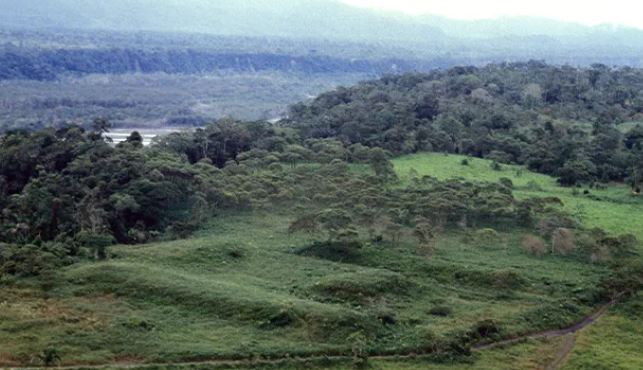In the heart of Ecuador’s Amazon rainforest, nestled deep within the Upano Valley’s verdant foothills, lies a revelation of ancient marvels that challenge our understanding of pre-Columbian civilizations. Recently unveiled through advanced lidar technology, this sprawling archaeological site unveils a tapestry of human ingenuity and urban planning on an unprecedented scale.
Rediscovering Lost Civilizations
A recent aerial survey spanning 600 square kilometers has exposed a once-hidden world of over 6,000 meticulously constructed mounds, each a testament to the lives and aspirations of ancient peoples. These mounds, believed to have served as residential areas and communal spaces, are clustered across 15 distinct settlements interconnected by a network of finely engineered roads. Such intricate urban planning suggests a highly organized society, adept at harnessing the fertile lands for sustenance and community life.
An Architectural Marvel Revealed
Beyond the residential clusters, lidar scans also reveal extensive agricultural fields meticulously drained and cultivated to grow staple crops like maize, beans, sweet potatoes, and yucca. These findings dispel earlier notions of the Amazon as an untouched wilderness, portraying instead an engineered landscape shaped by human hands over millennia. Tiered gardens within the settlements further attest to the sophistication of agricultural practices, underscoring a sustainable coexistence with the natural environment.
Unveiling Cultural Riches
Dating back approximately 2,000 years to around 500 B.C., this ancient megalopolis was home to diverse cultural groups whose legacies endure in the architectural remnants and artifacts unearthed. The meticulous planning and scale of these settlements redefine our perception of urbanism in the ancient Americas, painting a portrait of thriving societies thriving in harmony with their surroundings.
Implications for History and Beyond
The significance of these discoveries extends beyond archaeology, offering insights into the resilience and creativity of ancient civilizations amidst changing landscapes. As researchers continue to analyze the data, questions about the population size and cultural dynamics of these communities linger, promising further revelations into the mysteries of the past.
Conclusion
The unveiling of Ecuador’s ancient megalopolis stands as a testament to the enduring human spirit and the quest for knowledge across centuries. Through advanced technology and scholarly diligence, these discoveries challenge conventional narratives, offering a glimpse into a world where innovation and adaptation flourished against the backdrop of the Amazonian rainforest.
Summary Table:
| Key Learnings |
|---|
| – Advanced lidar technology reveals ancient urban complexities in Ecuador’s Amazon. |
| – Over 6,000 mounds and extensive road networks discovered, reshaping understanding of ancient urban planning. |
| – Agricultural fields drained and cultivated for staple crops highlight sophisticated farming practices. |
| – Settlements inhabited for approximately 2,000 years by diverse cultural groups. |
| – Insights into resilience and cultural richness of ancient Amazonian civilizations. |

Basant Kumar Sahoo is a seasoned writer with extensive experience in crafting tech-related articles, insightful editorials, and engaging sports content. With a deep understanding of technology trends, a knack for thought-provoking commentary, and a passion for sports, Basant brings a unique blend of expertise and creativity to his writing. His work is known for its clarity, depth, and ability to connect with readers across diverse topics.



